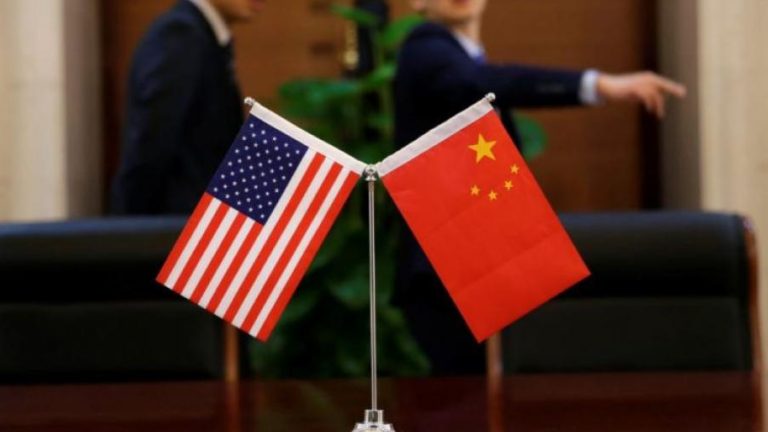The West is “hitting refresh” on China in technology/manufacturing
The writing had been on the wall even before COVID-19 surfaced, but the recent event of the coronavirus pandemic has helped to rapidly accentuate the problem. This problem is multifaceted and centers on the relationship between the West and China on matters concerning technology, manufacturing, and national interest. It appears that the West is now […]

The writing had been on the wall even before COVID-19 surfaced, but the recent event of the coronavirus pandemic has helped to rapidly accentuate the problem.
This problem is multifaceted and centers on the relationship between the West and China on matters concerning technology, manufacturing, and national interest. It appears that the West is now on a path to doing away with China. Lately, everything used in the West seemed to have been manufactured in China!
The foundational research for virtually all kinds of technology has been carried out in the West, where research findings are often made public domain for anyone to grab, implement, and commercialize. Thus, many countries, including China, have piggy-backed on the grace of the West. According to President Donlad J. Trump, “America made China what it is today.” An example is the facial recognition technology, which was developed in the West, but the Chinese have now owned it in the expansive way its application is deployed. However, the way that China utilizes adopted technologies is often not to the pleasure of the West, with the source of the problem being traceable to techno-ideological differences.
Alex Capri wrote on techno-ideology in Forbes.Com a couple of weeks ago, saying that the ideological elements of privacy, citizens’ freedom of expression, and transparency “are becoming essential currencies in international business.” Capri thinks that “these values are reshaping the global trade landscape into distinct ideological blocks that will accelerate the West’s decoupling from China.” He adds that “there are now more laws that block the sale of products and technology to autocratic governments, if these technologies would enhance their surveillance and censorship capabilities.”
Capri gives the example of the United Nations (UN) recent choice of the videoconferencing platform WeChat implemented by the Chinese company Tencent to broadcast and capture millions of conversations, in an event to celebrate the 75th anniversary of the UN. “But this decision produced an immediate backlash from Western governments and human rights groups on the grounds that the UN was effectively validating the Chinese Communist Party’s state surveillance and censorship apparatus.” Note that Tencent must turn over data to the central Chinese government if asked to do so. It is certainly an irony that “the UN chose the WeChat platform because it was the only one that would enable communication behind China’s Internet firewall, which has kept Western companies like Facebook locked.” The UN promptly backed out of its partnership with Tencent.
The Chinese companies HikVision and Dahua Technology, who are the world’s largest makers of video surveillance and facial recognition technology, are on the US “blacklist” of 28 Chinese entities because they enable the surveillance and digital monitoring of minority Muslim groups in western China. 42% of HikVision is reportedly owned by the Chinese state
The West’s dependence on China for manufacturing is particularly troubling to many. Who would have thought that the State of New York would be begging China to donate ventilators? I have heard that President Trump recently wanted to call out China on something “bad” that China had presumably done, but that Trump had to tone down because of considerations for possible manufacturing-related retaliation from China. I have also learned of similar fears of China retaliation that has forced the EU (European Union) to significantly tone down a report alluding to the Wuhan-China origin of COVID-19! These are obvious examples of crippling dependence on China.
How did the West, the origin of technology innovation for more than one hundred years, find itself in this blackmailing-situation with a country that started building stuff barely 10 years ago? Well, a couple of decades ago, the West, particularly America, decided it wanted to control intellectual property and technology, while outsourcing low-paying (manufacturing) jobs to China and Mexico. China of course ran away with the idea.
The other aspect of the problem that the West has against China on matters of technological innovation is the reported unending and massive theft by agents of the Chinese government of critical technologies developed in the West that have not been made public domain. A lot has been written on this issue in Time magazine and Blumberg News. The most current attempted thievery are the formidable efforts by China, Iran, and Russia to infiltrate and steal data on vaccines that are being developed for COVID-19.
It appears the US and EU are “hitting the refresh button” on China. Corporate profits, which drove the migration of manufacturing to China, take a front seat in peace times, but certainly not when countries are not in good terms. The West seems to have understood this, at least in the past two months. For example, you now have companies in the US manufacturing ventilators, PPE, masks, and so on, in tens of millions, and with the high quality usually associated with products from the West.
Nationalism also plays a part in the West’s desire to divorce itself from China. For example, the West does not want the advantage that Huawei currently has, to translate into 5G equipment manufacturing dominance. Capri notes that “this kind of techno-nationalist rationale is new to Washington.” The need has been recognized for the West to counter the multi-billion-dollar credit line that Huawei receives from China’s state-owned banks and institutions.”
The various issues presented above are propelling the West to want to do away with China.
